How Much Electricity (Power) Does Smart Glass Use?
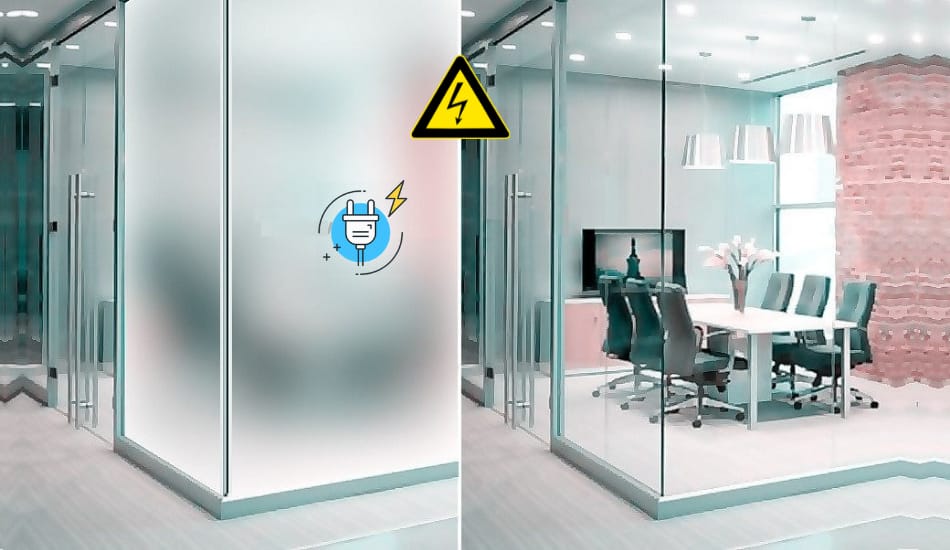
When we talk about smart glass, we must mention that this technology has been around for a long time (from the early 2000s). However, until recently, this concept came to life, more precisely when “smart homes” became a popular topic.
The working principle of smart glass is based on liquid crystal lattices placed in thin glass layers that change their position under the influence of electric current. That way, it allows you to adjust the transparency of the window. Now, the question that you might ask yourself is how much does smart glass uses electricity? Let’s find out!
So How Much Electricity (Power) Does Smart Glass Use? Smart Glass consumes between 3 to 5 watts per 10 square feet. If the smart glass is used for 1 hour per day, you will consume 1.8 kWh annually, which will cost you 16 cents per year (11 cents per kW is the average price in the United States). Smart glass can operate on 24V, 48V, or 65V AC power.
The power consumption of smart glass also depends on the type of material that is made from and it’s model. Of course, the larger the surface area of the glass, the more power it needs to operate. While smart glass isn’t a big energy consumer, it’s good to know how much power it needs.
Here is a table that shows how much electricity (power) does a smart glass consume:
| Smart Glass Area: | Average Power Consumption [W] | Annual Cost [$] |
|---|---|---|
| 10 square feet | 3-5 Watts | $0.22 |
| 50 square feet | 15-25 Watts | $1.10 |
| 100 square feet | 30-50 Watts | $2.19 |
| 200 square feet | 60-100 Watts | $4.38 |
| 500 square feet | 150-250 Watts | $10.95 |
The great thing about smart glass is that you can maximize natural light in your home and, at the same time, reduce the building’s dependence on using artificial light. However, electrochromic glass operates on very low voltage, where for example, you will need around 60 watts of power for 150 square feet of smart glass. That’s how much 1 light bulb consumes on average.
Note! The energy consumption of smart glass doesn’t exceed 7 watts per square feet.
Also, if you want to know how much a device in your household consumes energy, you can find out very easily through devices such as Wattmeters.
How Much Energy Can You Save By Using Smart Glass?
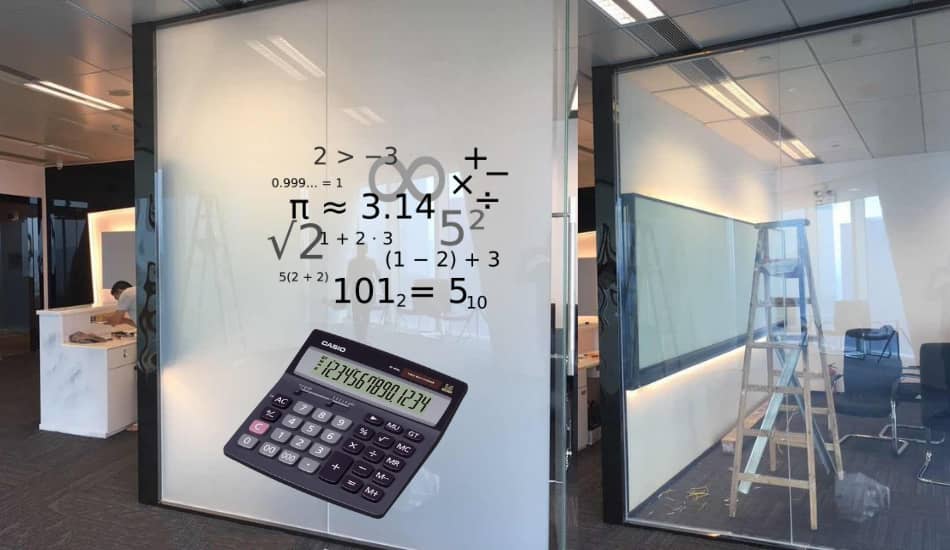
According to a California Energy Commission study that was done in 2020, it has been shown that smart (electrochromic) glass can save up to 44% of the energy that is used on lighting. Building Energy Data Book from the USA shows that buildings consume about 39% of total energy consumption and 73% electricity consumption.
Also, smart glass (smart windows) can reduce 19-26% energy during hot summer days by keeping the room temperature comfortable and fresh, so you don’t have to use the air conditioning system. If you want to learn more about this topic, be sure to read The Pros and Cons Of Smart Glass.
Note! By using electrochromic windows, you can save around 44% energy when it comes to lighting, while due to the cooling capabilities during summer, a decrease of 19 to 26% can be expected by using smart glass.
– US Building Energy Data Digest
Here are the most common household appliances and their electricity consumption:
| Household Appliances’ | Power Consumption [W] |
|---|---|
| Smart Glass | 5 W |
| Electric Fan | 30-40 W |
| Air conditioner | 700 W |
| Computer (PC) | 150 W |
| Rice cooker | 605 W |
| Microwave oven | 1000 W |
Keep in mind that the power consumption of smart glass is around 5W/hour per square feet, while the working voltage is 24VAC, 48VAC, or 65VAC. Therefore, we can see that smart glass is equivalent to a small lamp and it is only used according to the owner’s wishes.
How Smart (Electrochromic) Glass Works?
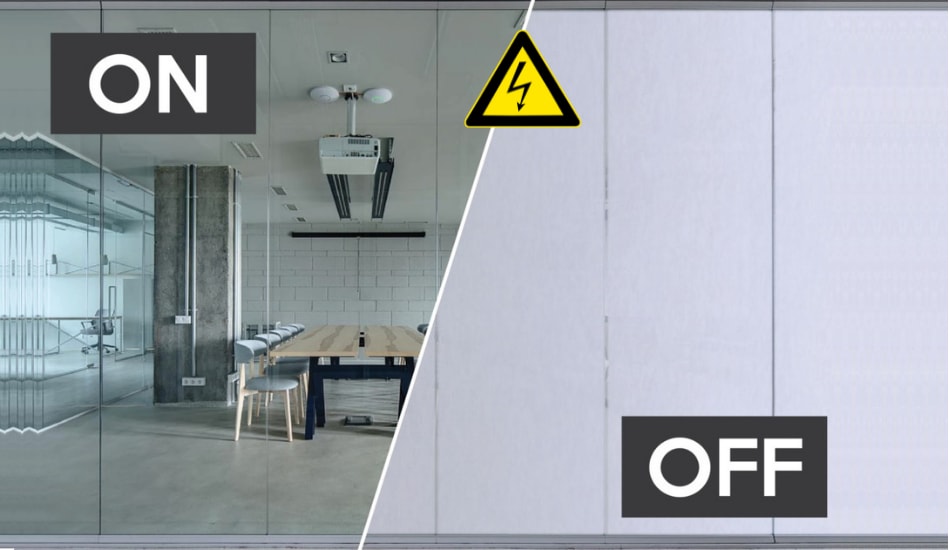
Smart glass (also known as electrochromic glass) is a glass that uses electricity to switch from transparent to opaque and versa, and it is used on windows, facades, skylights, and curtain walls. However, this technology has been around for decades, and it’s not new. The working principle of smart glass is based on the polarization of microparticles that are placed in an electromagnetic field. Therefore, when electric current flows, the glass surface changes its state to opaque and versa.
Also, for smart glass to work, it needs to have some kind of switch/button. By using it, you can adjust the state of the glass. When the switch is ON, the glass turns opaque, and when the switch is OFF, the glass is transparent. Keep in mind that such transition is done in a split second. By using smart glass in your environment you can improve the comfort, and the design of the room, while at the same time you will have as much natural light as possible. Lastly, smart glass reduces energy costs and gives the user the freedom of creation.
For those who want to learn more be sure to read How Does Smart (Switchable) Glass Work?
How Long Does Smart Glass Last?
Typically, the life span of smart glass is between 20 to 30 years, which depends on the number of layers it has, the build-in material, its environment, and its usage. The life span of smart glass can also be calculated by how many times you use it, and it amounts to about 6,000,000 times in the On/Off state.
However, several companies produce smart glass, and each manufacturer offers a different quality, which must be taken into account.
Where Smart Glass Is Best Used For?
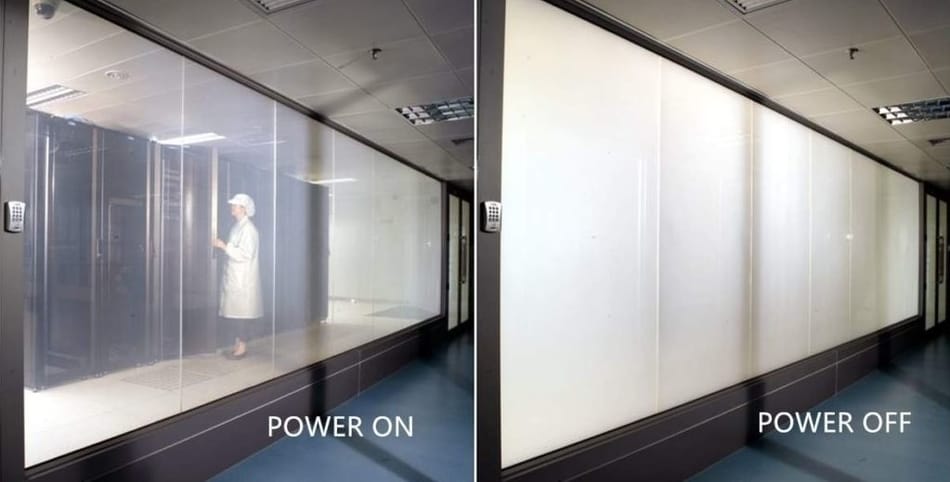
Smart (electrochromic) glass is a great option for buildings that are affected by sunshine, whether its office spaces, classrooms, healthcare, shops, cultural institutions, or museums. More and more business companies are opting for smart glass installation to control the amount of light that gets in their offices, rooms, and working space. That way they save energy, both on cooling and heating.
Having smart (electrochromic) glass gives a lot of additional options to your environment. Some smart glass models come with an automatic mode that has the possibility to optimize the supply of light, energy consumption, and color rendering.
This can also be automized and integrated into the already existing automation system. That way, you can manually change the shade of the glazing by using your smartphone or by using the switch on the wall.
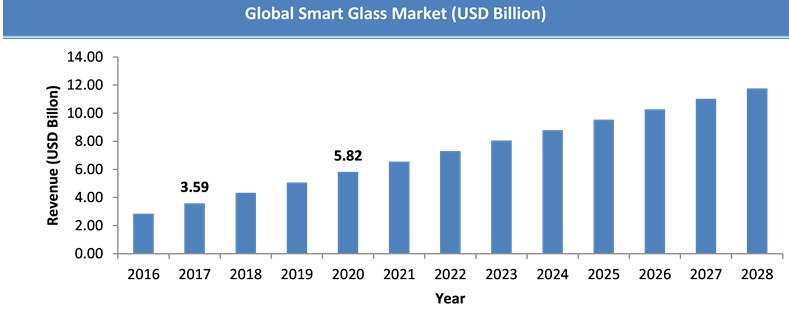
Advantages of Smart Glass
- Provides instant privacy. By using it, you can in a second switch from one state to another (you can go from transparent to opaque state in 0.1 sec).
- They are safe. Smart glass is made of a special material with multiple layers, which makes it bulletproof and shockproof.
- Passes more than 80% of sunlight, regardless of the smart glass state (transparent or opaque).
- They are energy-efficient. By using it, you can save money, while the electrical consumption is only 3-5W per feet. Also, by having a liquid crystal layer, it keeps heat and sound insulation.
- Easy to maintain. Smart glass requires almost no maintenance, you only need to clean it like normal windows.
- Ease of use. Smart glass only needs a switch/button and no instructions are required for its use.
- Security. Most manufacturers give a warranty of 5 years on smart glass.
FAQ: People Also Ask
Is Smart Glass Eco Friendly?
Smart glass is considered an eco-friendly product because it saves energy. In addition to that, it provides more natural light in the room, which gives a more eco-environment.
How Efficient is Smart Glass?
By using a smart glass, you can save up to 35% of energy annually on the light. Also, they bring natural daylight, have massive CO2 reduction (around 30%), and reduce 10% of steel and concrete in large buildings.
How is Smart Glass Powered?
Smart glass uses liquid crystal privacy film that responds to an electrical current. When you turn on electricity via the wiring, it changes the state of liquid crystals inside the glass layers, and the glass becomes opaque.
How Long Do Smart Glass Last?
Typically, smart glass lasts between 20 to 30 years, which usually depends on the model and chemical composition of the glass. It can be powered for 100,000 hours before it begins to lose properties.
Final Thoughts
Although smart glass is not widespread, it is good to know its advantages and disadvantages and understand how much electricity it consumes. We also explained that smart glass, on average, consumes about 5W per hour, which is very little compared to average home appliances.
So if you decide to install smart glass in your home or business office, don’t worry about electricity consumption. I hope that we have helped you understand a little more about smart glass and its working principle.
